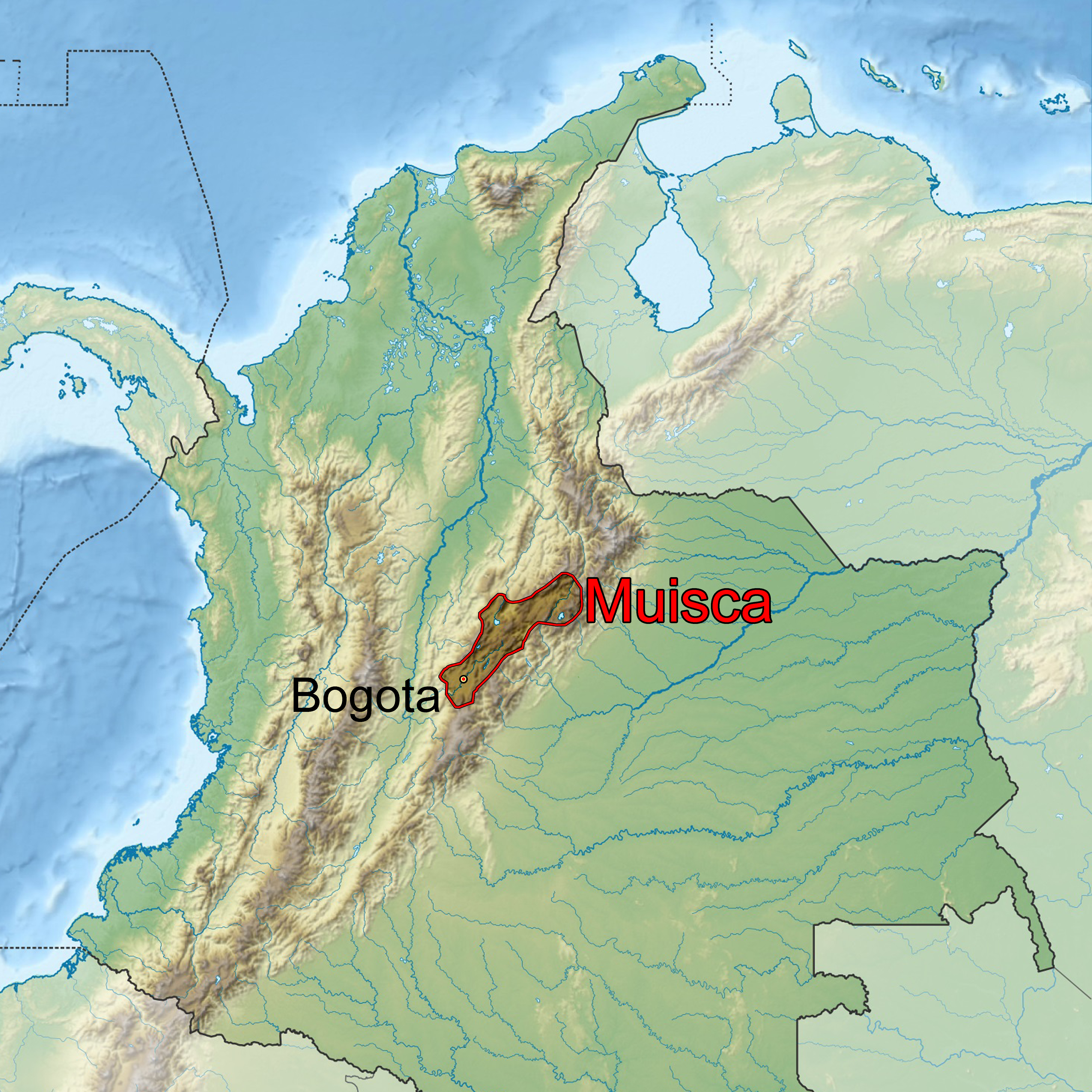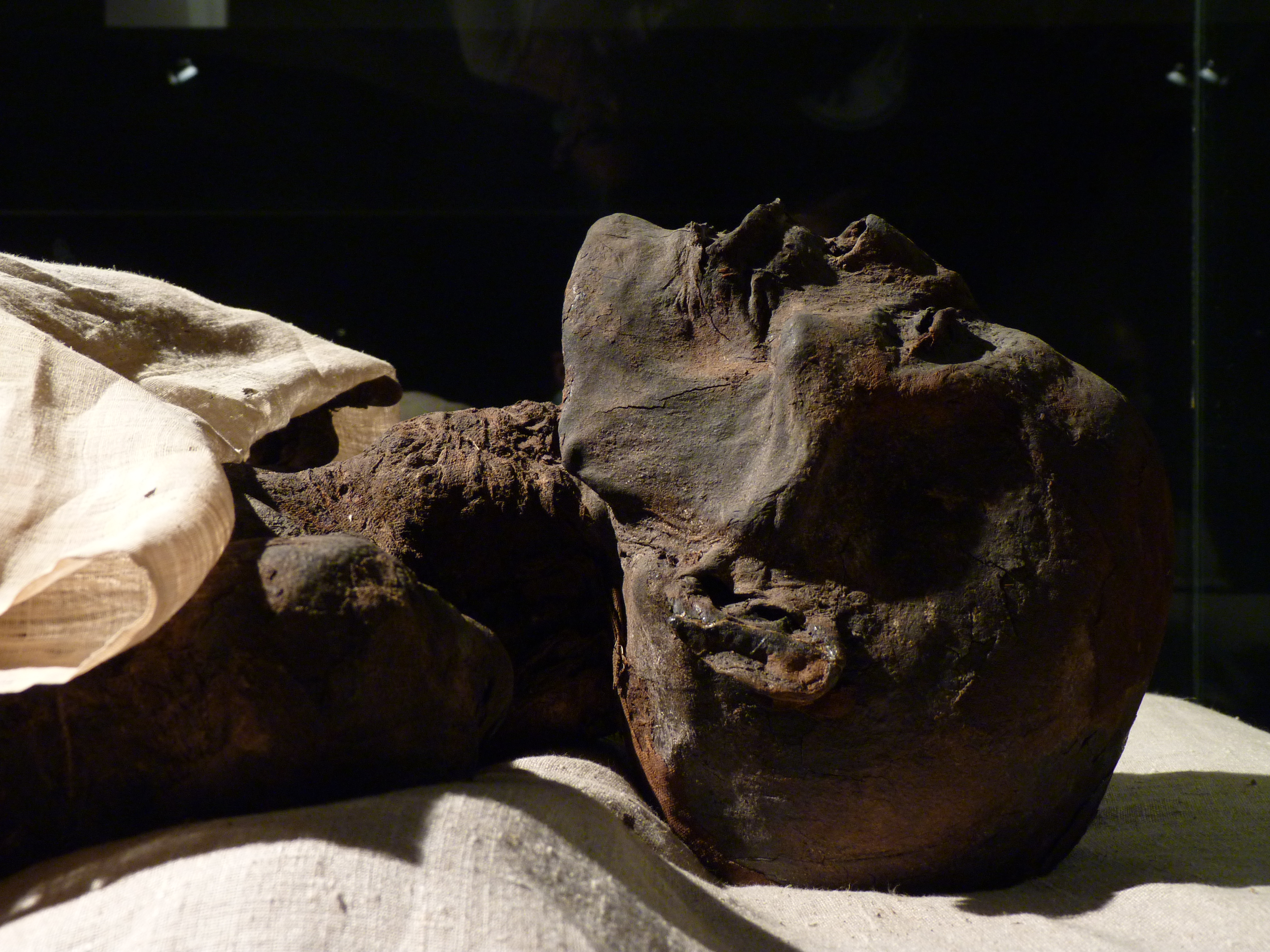|
Archaeology Museum, Sogamoso
The Archaeology Museum of Sogamoso is a museum on the archaeological findings in the area of sacred City of the Sun Sogamoso, Boyacá, Colombia. The museum hosts 4000 pieces of the Muisca and the Herrera Period. The museum was founded in 1942 by archaeologist Eliécer Silva Celis who helped building the reconstruction of the Sun Temple in the museum. The archaeology museum is since 1953 curated by the Universidad Pedagógica y Tecnológica de Colombia, based in Tunja.Website Museum Description The museum contains an archaeological park, , |
Sogamoso
Sogamoso () is a city in the department of Boyacá of Colombia. It is the capital of the Sugamuxi Province, named after the original Sugamuxi. Sogamoso is nicknamed "City of the Sun", based on the original Muisca tradition of pilgrimage and adoring their Sun god Sué at the Sun Temple. The city is located at an altitude of on the Altiplano Cundiboyacense in the Eastern Ranges of the Colombian Andes. Etymology Sogamoso is named after Sugamuxi or Suamox, the original name in Chibcha for the city and Sugamuxi, the last ''iraca'' of the sacred City of the Sun. Suamuxi means "Dwelling of the Sun".Etymology Sogamoso - Excelsio.net Knowledge about Sugamuxi has been provided by ... [...More Info...] [...Related Items...] OR: [Wikipedia] [Google] [Baidu] |
Muisca Music
Muisca music describes the use of music by the Muisca. The Muisca were organized in the Muisca Confederation before the Spanish conquest of the Muisca of the central highlands (Altiplano Cundiboyacense) of present-day Colombia. The Muisca used music in their religious rituals, to welcome the new ''cacique'' and during harvest, sowing and the construction of the houses. Muisca music The music of the Muisca was produced in a magic-religious sense; music was played during religious rituals where the Muisca people gathers to worship the Sun ( Sué), the Moon ( Chía) and other deities. The music served as hope for the guecha warriors and to relieve the pain of the dead.Ocampo López, 2007, Ch.V, p.230 According to the Spanish chroniclers, the music of the Muisca was sad and monotonous. The people could play music during events that took a full month to please their gods where they sang about the wars fought and begged the gods for victory in future wars. Everytime a war was fou ... [...More Info...] [...Related Items...] OR: [Wikipedia] [Google] [Baidu] |
Muisca
The Muisca (also called Chibcha) are an indigenous people and culture of the Altiplano Cundiboyacense, Colombia, that formed the Muisca Confederation before the Spanish conquest. The people spoke Muysccubun, a language of the Chibchan language family, also called ''Muysca'' and ''Mosca''. They were encountered by conquistadors dispatched by the Spanish Empire in 1537 at the time of the conquest. Subgroupings of the Muisca were mostly identified by their allegiances to three great rulers: the ''hoa'', centered in Hunza, ruling a territory roughly covering modern southern and northeastern Boyacá and southern Santander; the '' psihipqua'', centered in Muyquytá and encompassing most of modern Cundinamarca, the western Llanos; and the '' iraca'', religious ruler of Suamox and modern northeastern Boyacá and southwestern Santander. The territory of the Muisca spanned an area of around from the north of Boyacá to the Sumapaz Páramo and from the summits to the wes ... [...More Info...] [...Related Items...] OR: [Wikipedia] [Google] [Baidu] |
1942 Establishments In Colombia
Year 194 ( CXCIV) was a common year starting on Tuesday (link will display the full calendar) of the Julian calendar. At the time, it was known as the Year of the Consulship of Septimius and Septimius (or, less frequently, year 947 ''Ab urbe condita''). The denomination 194 for this year has been used since the early medieval period, when the Anno Domini calendar era became the prevalent method in Europe for naming years. Events By place Roman Empire * Emperor Septimius Severus and Decimus Clodius Septimius Albinus Caesar become Roman Consuls. * Battle of Issus: Septimius Severus marches with his army (12 legions) to Cilicia, and defeats Pescennius Niger, Roman governor of Syria. Pescennius retreats to Antioch, and is executed by Severus' troops. * Septimius Severus besieges Byzantium (194–196); the city walls suffer extensive damage. Asia * Battle of Yan Province: Warlords Cao Cao and Lü Bu fight for control over Yan Province; the battle lasts for over 100 days ... [...More Info...] [...Related Items...] OR: [Wikipedia] [Google] [Baidu] |
Archaeological Museums In Colombia
Archaeology or archeology is the scientific study of human activity through the recovery and analysis of material culture. The archaeological record consists of artifacts, architecture, biofacts or ecofacts, sites, and cultural landscapes. Archaeology can be considered both a social science and a branch of the humanities. It is usually considered an independent academic discipline, but may also be classified as part of anthropology (in North America – the four-field approach), history or geography. Archaeologists study human prehistory and history, from the development of the first stone tools at Lomekwi in East Africa 3.3 million years ago up until recent decades. Archaeology is distinct from palaeontology, which is the study of fossil remains. Archaeology is particularly important for learning about prehistoric societies, for which, by definition, there are no written records. Prehistory includes over 99% of the human past, from the Paleolithic until the advent of ... [...More Info...] [...Related Items...] OR: [Wikipedia] [Google] [Baidu] |
Tourist Attractions In Boyacá Department
Tourism is travel for pleasure or business; also the theory and practice of touring (other), touring, the business of attracting, accommodating, and entertaining tourists, and the business of operating tour (other), tours. The World Tourism Organization defines tourism more generally, in terms which go "beyond the common perception of tourism as being limited to holiday activity only", as people "travelling to and staying in places outside their usual environment for not more than one consecutive year for leisure and not less than 24 hours, business and other purposes". Tourism can be Domestic tourism, domestic (within the traveller's own country) or International tourism, international, and international tourism has both incoming and outgoing implications on a country's balance of payments. Tourism numbers declined as a result of a strong economic slowdown (the late-2000s recession) between the second half of 2008 and the end of 2009, and in consequence of t ... [...More Info...] [...Related Items...] OR: [Wikipedia] [Google] [Baidu] |
Archeological Museum Of Pasca
The Archaeology Museum of Pasca ( es, Museo Arqueológico de Pasca) is an archaeological museum located in Pasca, Colombia. It houses a great collection of Pre-Columbian objects and human remains, including Muisca mummies. It has a replica of the famous golden raft, ''Balsa Muisca'', found near this town that represents the ''El Dorado'' rite. The museum hosts a piece of Muisca textile from Belén, Boyacá. The total collection numbers 2500 pieces. Apart from the Muisca artifacts, the museum hosts material from the Tairona, Calima, Quimbaya, Sinú, San Agustín and Tierradentro, among others. It also has a botanic garden,Museo Arqueológico de Pasca - El Tiempo with stuffed animals and a large |
Solstice
A solstice is an event that occurs when the Sun appears to reach its most northerly or southerly excursion relative to the celestial equator on the celestial sphere. Two solstices occur annually, around June 21 and December 21. In many countries, the seasons of the year are determined by the solstices and the equinoxes. The term ''solstice'' can also be used in a broader sense, as the day when this occurs. The day of a solstice in either hemisphere has either the most sunlight of the year (summer solstice) or the least sunlight of the year ( winter solstice) for any place other than the Equator. Alternative terms, with no ambiguity as to which hemisphere is the context, are " June solstice" and "December solstice", referring to the months in which they take place every year. The word ''solstice'' is derived from the Latin ''sol'' ("sun") and ''sistere'' ("to stand still"), because at the solstices, the Sun's declination appears to "stand still"; that is, the seasonal move ... [...More Info...] [...Related Items...] OR: [Wikipedia] [Google] [Baidu] |
Sugamuxi
Sugamuxi (died 1539) was the last ''iraca''; ''cacique'' of the sacred City of the Sun Sogamoso, Suamox. Sugamuxi, presently called Sogamoso, was an important city in the Muisca religion, religion of the Muisca people, Muisca who inhabited the Altiplano Cundiboyacense in the times before the Spanish conquest of the Muisca, Spanish conquistadors reached the central highlands of the Colombian Andes. Fellow Muisca rulers of other territories within the Muisca Confederation were Tundama in Duitama, Tundama, ''zaque'' Aquiminzaque in Tunja, Hunza and ''zipa'' Sagipa in Bogotá, Bacatá. Biography Sugamuxi was the successor of Nompanim, as ''cacique'' of Suamox. After the bloody confrontation of the ''zaque'' Quemuenchatocha and ''zipa'' Nemequene, Sugamuxi decided to stay neutral and in favour of peace between the two ever battling parts of the Muisca Confederation. [...More Info...] [...Related Items...] OR: [Wikipedia] [Google] [Baidu] |
Iraca
The ''iraca'', sometimes spelled ''iraka'',Ocampo López, 2013, Ch.12, p.77Ocampo López, 2013, Ch.14, p.85 was the ruler and high priest of Sugamuxi in the confederation of the Muisca who inhabited the Altiplano Cundiboyacense; the central highlands of the Colombian Andes. ''Iraca'' can also refer to the Iraka Valley over which they ruled. Important scholars who wrote about the ''iraca'' were Lucas Fernández de Piedrahita, Alexander von Humboldt and Ezequiel Uricoechea. Background In the centuries before the Spanish conquistadores entered central Colombia in the 1530s, the valleys of the Eastern Ranges were ruled by four main leaders and several independent ''caciques''. The northern territories were ruled by the ''zaque'' from Hunza, the present-day capital of Boyacá department and the southern area under the reign of the ''zipa'', based in Bacatá, currently known as the Colombian capital Bogotá. Other important rulers were the ''iraca'' and the ''cacique'' Tund ... [...More Info...] [...Related Items...] OR: [Wikipedia] [Google] [Baidu] |
Metallurgy
Metallurgy is a domain of materials science and engineering that studies the physical and chemical behavior of metallic elements, their inter-metallic compounds, and their mixtures, which are known as alloys. Metallurgy encompasses both the science and the technology of metals; that is, the way in which science is applied to the production of metals, and the engineering of metal components used in products for both consumers and manufacturers. Metallurgy is distinct from the craft of metalworking. Metalworking relies on metallurgy in a similar manner to how medicine relies on medical science for technical advancement. A specialist practitioner of metallurgy is known as a metallurgist. The science of metallurgy is further subdivided into two broad categories: chemical metallurgy and physical metallurgy. Chemical metallurgy is chiefly concerned with the reduction and oxidation of metals, and the chemical performance of metals. Subjects of study in chemical metallurgy inclu ... [...More Info...] [...Related Items...] OR: [Wikipedia] [Google] [Baidu] |
Mummy
A mummy is a dead human or an animal whose soft tissues and organs have been preserved by either intentional or accidental exposure to chemicals, extreme cold, very low humidity, or lack of air, so that the recovered body does not decay further if kept in cool and dry conditions. Some authorities restrict the use of the term to bodies deliberately embalmed with chemicals, but the use of the word to cover accidentally desiccated bodies goes back to at least 1615 AD (see the section Etymology and meaning). Mummies of humans and animals have been found on every continent, both as a result of natural preservation through unusual conditions, and as cultural artifacts. Over one million animal mummies have been found in Egypt, many of which are cats. Many of the Egyptian animal mummies are sacred ibis, and radiocarbon dating suggests the Egyptian Ibis mummies that have been analyzed were from time frame that falls between approximately 450 and 250 BC. In addition to the mumm ... [...More Info...] [...Related Items...] OR: [Wikipedia] [Google] [Baidu] |

.jpg)




